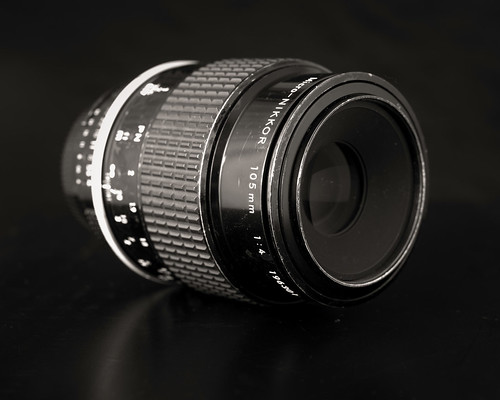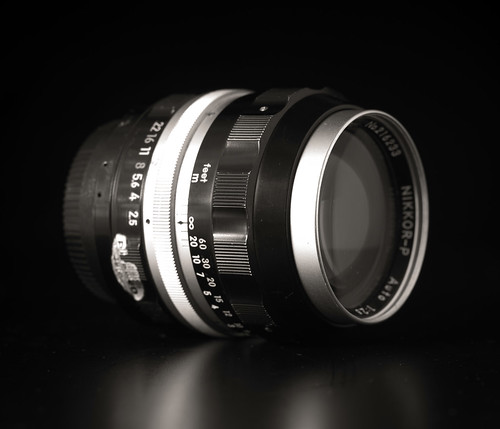I had this lens up for sale not too long ago. No one seemed to want to bite, even though I'd put a rather low price on it. So I took down the forsale ad on my Nikon Micro-Nikkor 105mm f/4 Ai lens, put it into its case, and put it back on the shelf.
My wife and I then went on winter holiday, where, for the second year in a row, we got stuck in Nice.

OK. Just how "stuck" can one actually be when in Nice?
Well, we were "locked down" by the French government due to the extreme pandemic conditions in the Alps Maritime (where Nice is located). All social events, art exhibitions, and concerts were cancelled and banned until further notice. Travel was limited to 10km from your place of residence. We couldn't legally return to Paris, even if we wanted to.
Of course, there was the beautiful Mediterranean sun and warm winter weather, right? Er. No. Not this year. It rained. And it rained. And it rained some more. And it was cold. There was snow in the hills around Nice well into April. Nothing was open, though we could get "take-out" from a couple restaurants in the area, including a wonderful "hole in the wall" pizza place.
I know. I'm bitching and moaning about being "locked down" in paradise.
It did give me time to think, though. One of the things I thought about were my manual focus Nikkor lenses. I still have too many of them for one man's own good. I enjoy having them. I enjoy photographing with them.
When we were finally able to reach Paris again I was delighted to see all my "stuff" and "things." Just seeing my several boxes of toys made me smile.
I'd taken a look at out of focus rendition in an earlier article. There wasn't much to say except the Nikon Micro-Nikkor 105mm f/4 Ai didn't look a whole lot different than some of my other lenses. Resolution is as good as anything else. It was nice but unremarkable. I hadn't found must "magic" in the lens.

After photographing three lenses for other articles found here, I
turned the Sony A7 and Nikon Micro-Nikkor f/4 Ai on a pretty little orchid my
wife brought home. When looking at the images I thought "gosh, now
don't those look nice?" The out of focus rendition behind the point of
focus was quite unexpectedly smooth and delicate.
My thoughts on this old "Heliar" design Micro-Nikkor lens needed an evolution in light (ahem!) of those orchid photos. Then I looked more carefully at the lens portraits I'd taken earlier the same day and thought "well well well then, aren't those just drop dead gorgeous?"
Maybe I'd been a little too hasty in putting this old beat-up lens up forsale?
Next month there will be a couple car gatherings. One in particular should be an interesting event to try this ugly duckling of a Nikon Micro-Nikkor f/4 Ai. Hopefully my current more highly evolved thoughts will be soon proven correct.
Yes. I know. Like everyone else I've been coupe'd up far too long. I find myself _wanting_ to love this lens and it gives me pleasure to think I've found where the "magic" lay.










